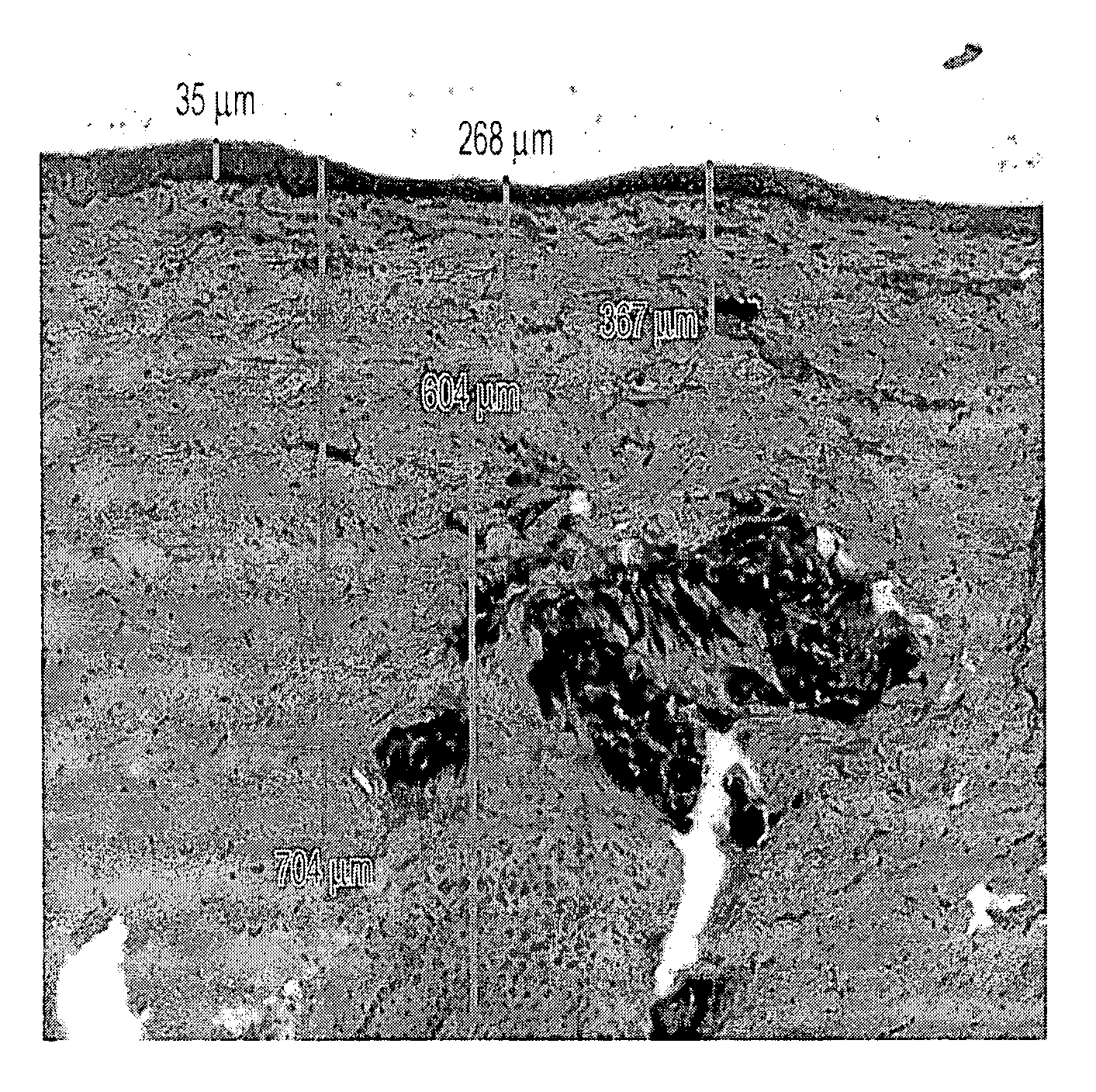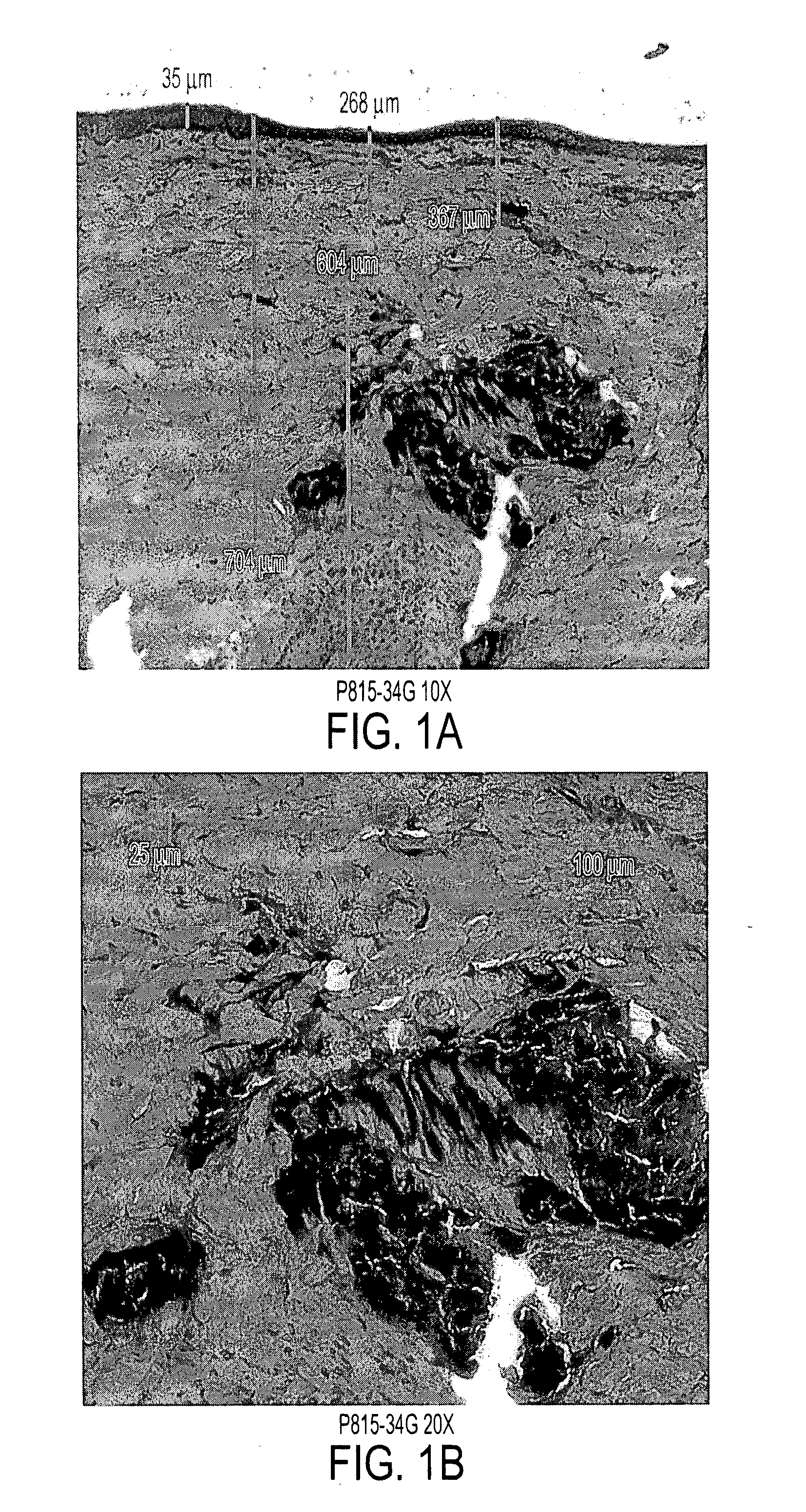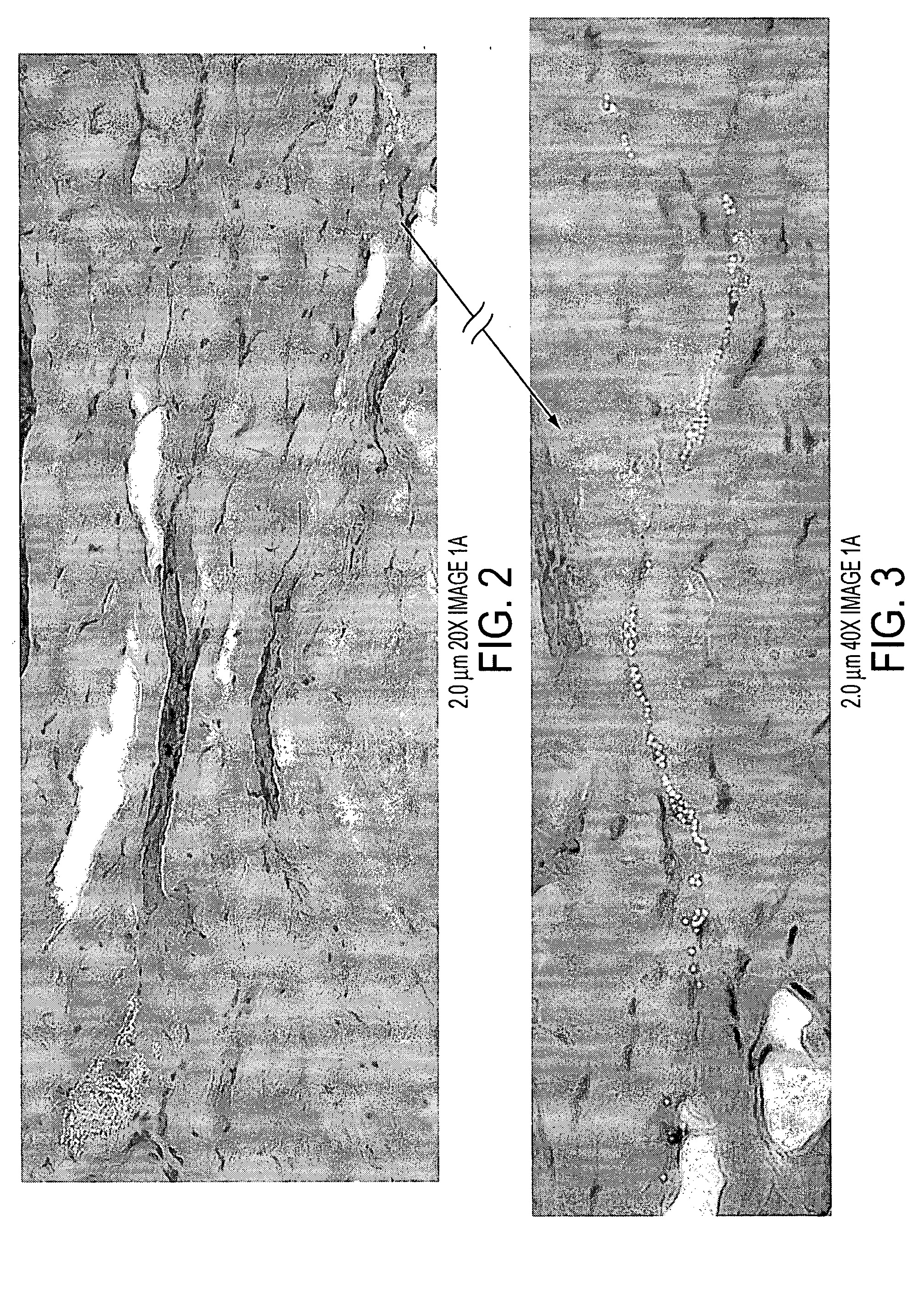Intradermal cellular delivery using narrow gauge micro-cannula
a micro-cannula and intradermal technology, applied in the direction of antibody medical ingredients, drug compositions, immunological disorders, etc., can solve the problems of insufficient regulation of effective t-cell mediated immunity, insufficient dendritic cell and related cell type and poor study of methods for administering cellular based therapeutics and vaccines into patients
- Summary
- Abstract
- Description
- Claims
- Application Information
AI Technical Summary
Benefits of technology
Problems solved by technology
Method used
Image
Examples
example 1
Cell Viability Following Microneedle Delivery
Purpose:
[0051] Cells were delivered in vitro through a microneedle designed for intradermal delivery and tested for viability following such delivery.
Method:
[0052] 1. Experimental materials. [0053] a. Microneedle. A 34 gauge microneedle with a length of 1 mm length was used. [0054] b. Cell line. P815 cell line was a mouse mastocytoma-derived cell line (Lundak, R L & Raidt, D J, Cell. Immunol. 9:60-66, 1973) that is often used as a model system for antigen-presentation studies. In particular, P815 cells could be transfected with genetic material encoding specific antigens such as those used in a vaccine for an infectious disease or cancer, or could be loaded with such antigens directly. Then, these P815 cells could be used to stimulate T cells in vitro.
[0055] P815 cells for this experiment had a size of 10-15 μm in diameter on non-adherent rounded cells, which was of a similar size to dendritic cells and related Langerhans cells. In...
example 2
Dendritic Cell Viability Following Microneedle Delivery
Purpose:
[0067] A dendritic cell line (JAWS-II, as described in U.S. Pat. Nos. 5,648,219, and 5,830,682) was delivered through two different types of microneedles designed for intradermal delivery (30 Ga and 34 Ga needles) and tested for viability and expression of functional cell surface markers following such delivery. Delivery through a standard 27 Ga needle was included for comparison.
Method:
[0068] 1. Experimental materials. [0069] a. Needles and Microneedles: Cells were delivered through: a) a standard 27 Ga needle, b) a 30 Ga, 1.5 mm long stainless steel microneedle or c) a 34 Ga, 1.0 mm long stainless steel microneedle. [0070] b. Cell line. The mouse JAWS-II cell line, as described in U.S. Pat. Nos. 5,648,219 and 5,830,682 was used for these studies. Prior to delivery, cells were activated for 24 hr with IFN-γ, IL-4, TNF-α and GM-CSF, as described in U.S. Pat. Nos. 5,648,219 and 5,830,682.
[0071] 2. Experimental step...
example 3
Cell Distribution Following Intradermal Delivery In Vivo
Purpose:
[0082] Characterize the distribution pattern of cells administered in vivo using microneedles.
Method:
[0083] 1. Model system used.
[0084] Pigs were used for intradermal injection. Pig skin represents a well accepted model for human skin. P815 cells, as described in Example 1, were used as the model cell line.
[0085] 2. Experimental steps.
[0086] P815 cells were delivered intradermally by 34 gauge microneedles 1 mm in length. Cells were suspended to a concentration of 40×106 cells / ml. A total of 0.1 ml (4×106 cells) was administered via bolus injection over a time period of approximately 1 minute.
[0087] 3. Evaluation of results.
[0088] Immediately after allowing the bleb to resolve, full thickness skin biopsies were collected and processed for tissue sectioning and Haematoxylin & Eosin (H&E) staining. Pictures were taken from the light microscope observation.
[0089] 4. Results
[0090]FIG. 1 displays the distribution...
PUM
| Property | Measurement | Unit |
|---|---|---|
| depth | aaaaa | aaaaa |
| flow rate | aaaaa | aaaaa |
| flow rate | aaaaa | aaaaa |
Abstract
Description
Claims
Application Information
 Login to View More
Login to View More - R&D
- Intellectual Property
- Life Sciences
- Materials
- Tech Scout
- Unparalleled Data Quality
- Higher Quality Content
- 60% Fewer Hallucinations
Browse by: Latest US Patents, China's latest patents, Technical Efficacy Thesaurus, Application Domain, Technology Topic, Popular Technical Reports.
© 2025 PatSnap. All rights reserved.Legal|Privacy policy|Modern Slavery Act Transparency Statement|Sitemap|About US| Contact US: help@patsnap.com



